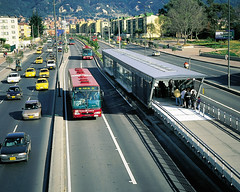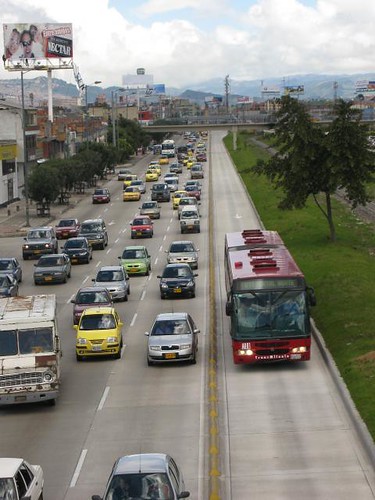Bus Rapid Transit Planning Guide
Bus Rapid Transit in "third world" countries is a particularly successful form of transit, moving many people at a cost much lower than building subways. The Institute for Transportation & Development Policy and the World Resources Institute are spreading the gospel.
In the US, the Federal Transit Administration is big on BRT. I would argue this is because the federal government is too poor and too undercommitted to transit to pay for heavy and light rail systems. Plus, this type of transit is expensive and requires certain preconditions--such as population density, compact development, concentrated work destinations, etc.--to work well.
The big difference between BRT in North vs. South America is the tolerance for density on the buses. In the U.S., the stated capacity for a 60 foot articulated bus is 80 people. In Chile or Colombia, the same bus carries 160 people--as many or more people as a subway car.
Because of this key difference, not to mention the differences in poverty (in places where more people are extremely poor, without alternative transportation options, they have to ride transit), and the relative unwillingness to ride buses in the U.S., at least in comparison to other forms of transit, not to mention a general unwillingness to ride transit, it is almost always disingenuous to make inferences about the likelihood of success for BRT in the United States for sure, and probably in Canada as well.
ITDP has published a Bus Rapid Transit Planning Guide. It has a good section on marketing, and this section is relevant to all transit, not just the BRT form.

TransMilenio Bus Rapid Transit, Bogota. Photo from the World Resources Institute. See "Bogotá designs transportation for people, not cars."
Another way to think about this is that it's all relative. Clearly, this Transmilenio photo below shows that compared to driving cars, the BRT system is a good way to move many more people than cars.

Photo by David Kroomba, Ride for Climate.
Labels: bus rapid transit, transportation planning



0 Comments:
Post a Comment
<< Home